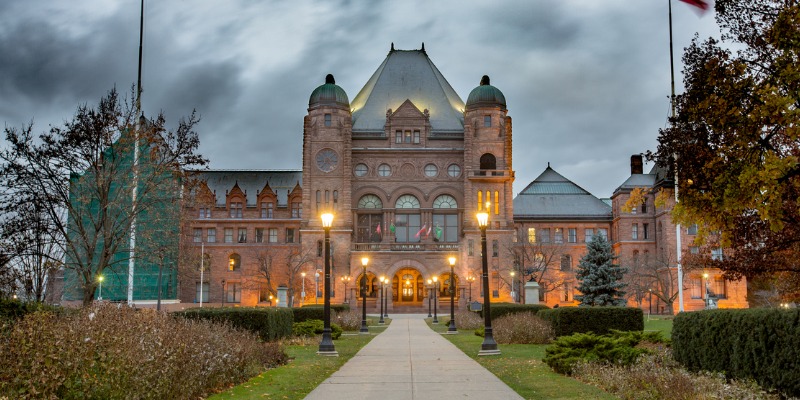Ontario budget deficit likely larger than forecast

We recently blogged on the Ontario government’s March 2020 Economic and Fiscal Update (hereafter simply referred to as the Fiscal Update), which we concluded was too optimistic in its economic and revenue assumptions, and included new spending, some of which would likely do little to stabilize incomes in response to the current recession. This follow up blog uses two different approaches to approximate how much larger the deficit might be in 2020-21 due to lower than budgeted revenues.
Ontario’s Fiscal Update projected a deficit of $20.5 billion for 2020-21 compared to an estimated deficit of $9.2 billion for the year just ended (2019-20). The increase in the deficit is almost entirely explained by increases in program spending ($8.0 billion) since revenues are only expected to decline by $400 million and interest costs to increase by $600 million in 2020-21.
As we previously explained, these revenue and deficit estimates are based on optimistic economic assumptions, including zero economic growth in 2020 rather than an actual recession. TD Bank, for instance, recently released its updated economic forecasts and predicted a 3.9 per cent contraction in the Ontario economy in 2020. Royal Bank’s updated estimate was even more pessimistic, predicting a 4.2 per cent decline in Ontario’ economy. The Parliamentary Budget Officer (PBO), which provides national forecasts, suggests an even gloomier 2020 for Canada as a whole, predicting a decline of 5.1 per cent in the overall Canadian economy.
Similarly, the Ontario government expects the unemployment rate to increase only slightly from 5.6 per cent in 2019 to 6.6 per cent in 2020 whereas TD Bank predicts a rise to 7.3 per cent unemployment in the province and Royal Bank forecasts an even larger increase to 8.9 per cent.
There are two readily available approaches to try to estimate the potential shortfall in expected revenues in the province, which will directly impact the size of the deficit. Both approaches entail focusing on the key direct revenue sources for the provincial government, namely personal and business income taxes, and the provincial sales tax, which together are expected to account for 75.4 per cent of the province’s total direct taxes in 2020-21. (If other revenue sources such as transfers from the federal government, income from government business enterprises, and other revenues are included, these three key taxes fall to 52.2 per cent of all the provincial government’s total revenues.)
The first approach is to examine the changes in these revenue sources during the most recent recession in 2009-10. Specifically, this approach examines the actual decline in revenues between 2008-09 and 2009-10. The historical budget data indicates that personal income tax revenues declined 8.9 per cent during this period while business income taxes decreased 17.6 per cent and sales tax revenues increased slightly (0.6 per cent). In comparing the recession of 2008-09, the current recession looks, at least preliminary more severe and will more than likely adversely impact revenue more seriously.
If we apply these numbers, in other words, if we assume the province’s three main tax revenues will experience the same changes as in 2008-09 to 2009-10, there will be an additional shortfall of $5.9 billion. This would push the province’s annual deficit for 2020-21 to $26.4 billion.
The second approach to the province’s revenues is based on the most recent forecast by the PBO for the country as a whole. Given Ontario’s prominence in the country, it represents 38.6 per cent of the national economy, it’s reasonable to apply these national numbers to the province as a proxy even while acknowledging the effect of Alberta’s pronounced decline on the national economic numbers.
The PBO’s most recent analysis forecasts a 7.1 per cent decline in personal income taxes, a 9.5 per cent decline in business income taxes, and a 17.8 per cent decline in sales (and related) taxes. These estimates result in a larger shortfall for the provincial government in 2020-21: $8.8 billion. This would push the annual deficit close to $30.0 billion ($29.3 billion) for the year.
What’s clear from either approach is that the overly optimistic economic assumptions by the Ontario government in formulating their economic update likely means less revenues being collected than budgeted, which means a larger deficit than planned. Put simply, the financial situation in Ontario is likely worse than the recent Fiscal Update suggested.

